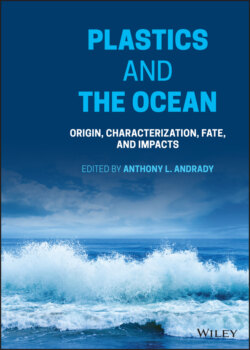Читать книгу Plastics and the Ocean - Группа авторов - Страница 54
2.3.3.2 Transport of Plastic Additives to/From Marine Biota
ОглавлениеMarine organisms may be exposed to plastic additives via inhalation, dermal sorption, or ingestion of plastics or the free additives. Significant debate exists in the scientific literature whether the dominant route of exposure is from additives leaching from ingested plastics in the gut or from direct exposure to additives in water or prey. Early studies argued that plastic ingestion is a dominant exposure route since a wide range of marine animals eat plastics, and experimental studies have proven this mechanism in laboratory animals (Browne et al. 2013; GESAMP 2015; Rochman et al. 2013; Tanaka et al. 2013; Teuten et al. 2009). Other studies argue that the contribution of plastics to the bioaccumulation of additives in marine organisms is likely small; rather bioaccumulation is predominantly from ingesting prey tissues that already contain these compounds (Bakir et al. 2014; Clukey et al. 2018; Koelmans et al. 2014, 2016; Rochman et al. 2013; Zarfl and Matthies 2010). In fact, ingesting “clean” plastics reduces HOC concentrations in the body by sorption of the compounds to plastic as it moves through the gut and elimination via feces (Koelmans et al. 2014). Koelmans et al. (2016) provides a critical review of the literature concerning the role of plastic as a carrier/vector of additives and concluded that for the majority of marine habitats, bioaccumulation of HOCs from microplastic is likely overwhelmed by uptake via natural diet. However, in some cases, exposure to additives by the ingestion of plastic may be substantial if the amount of additives in ingested plastic is sufficiently larger than the amount in other diet items (Koelmans et al. 2016).
